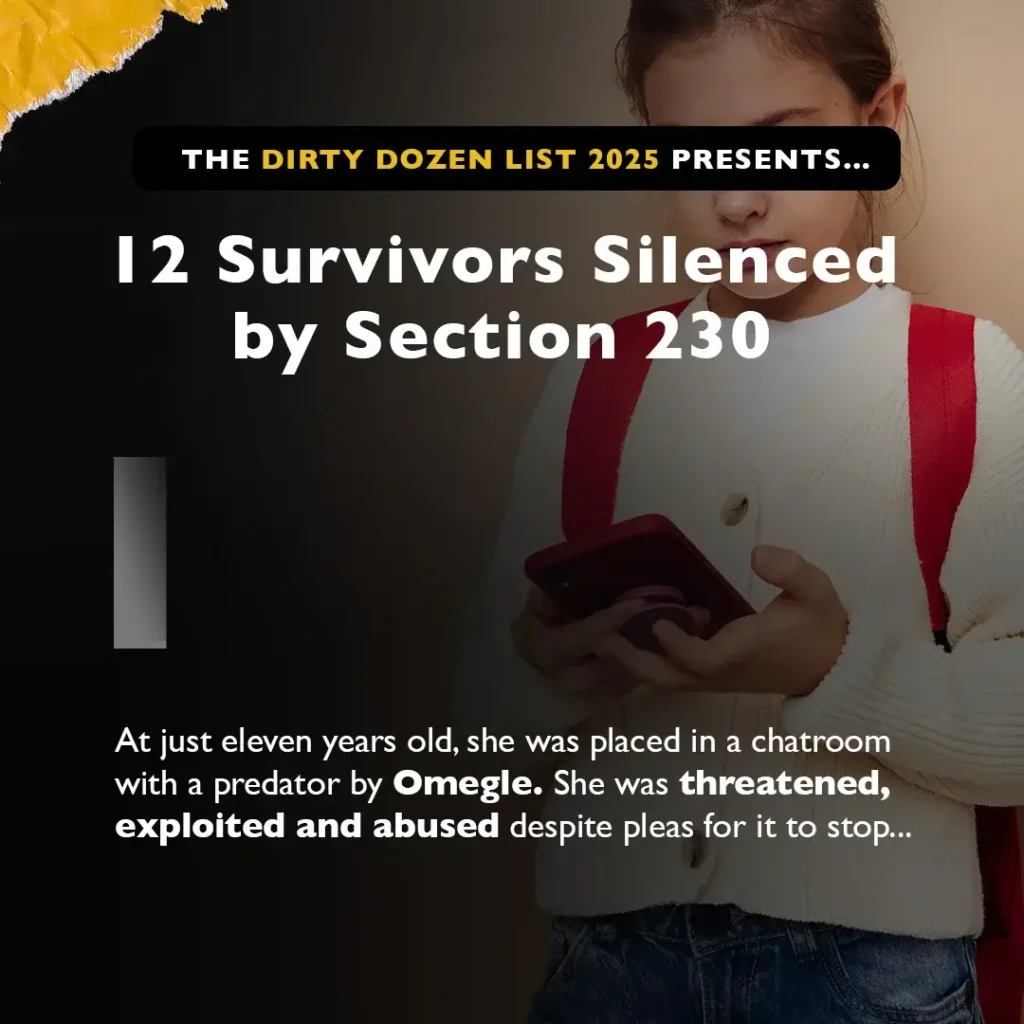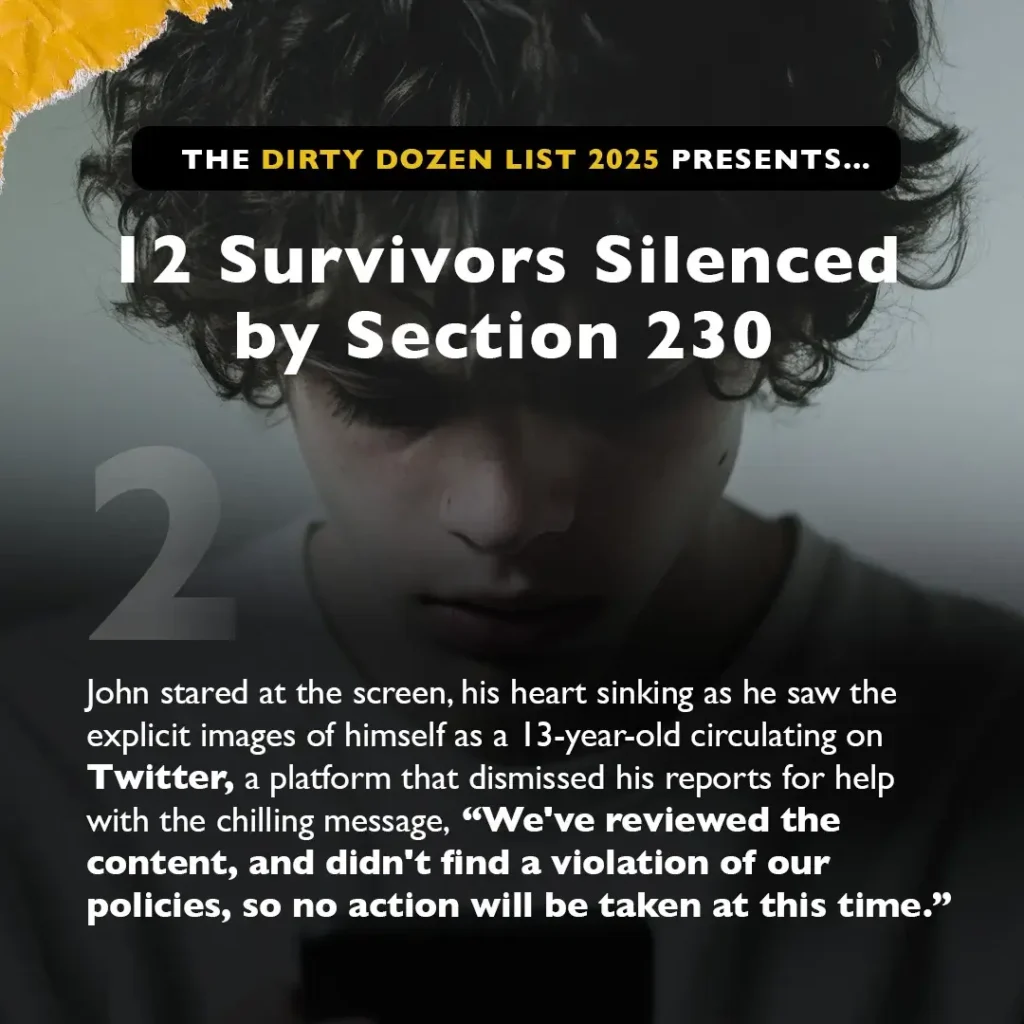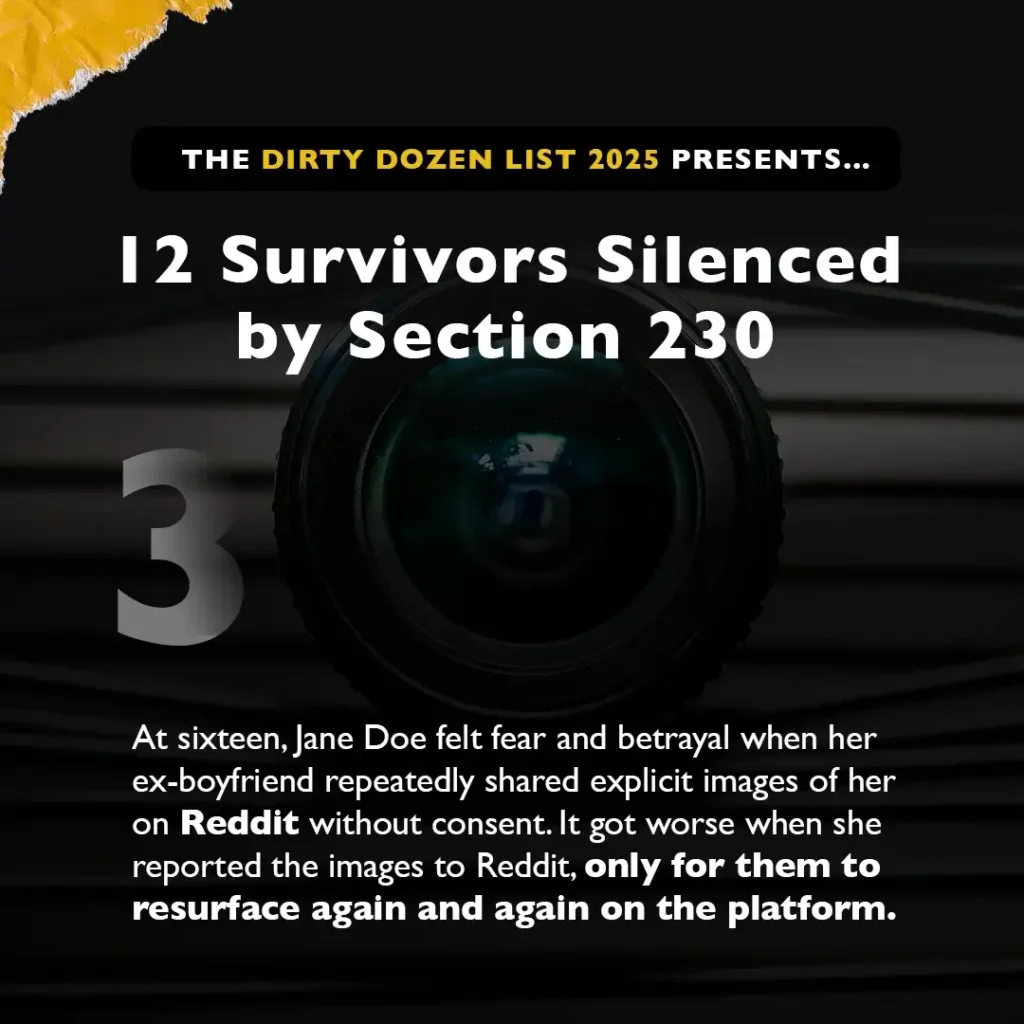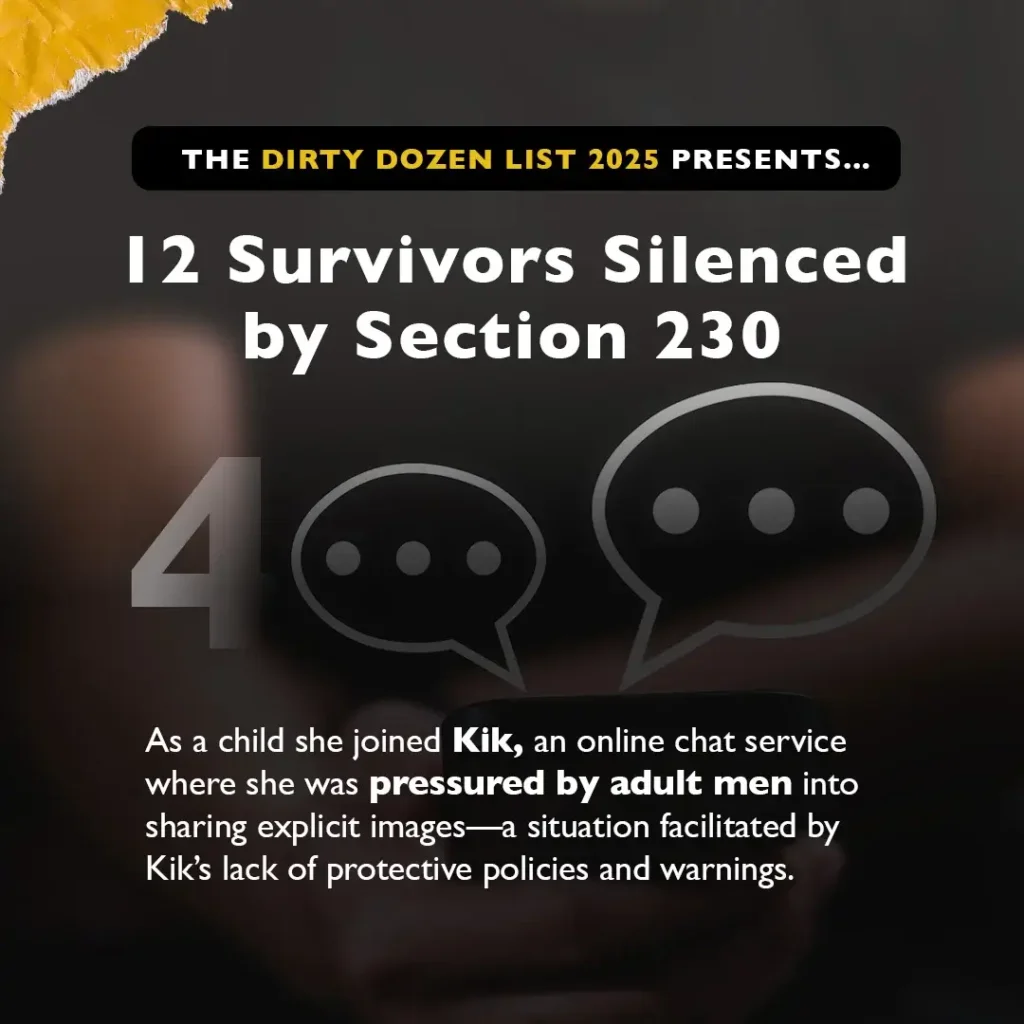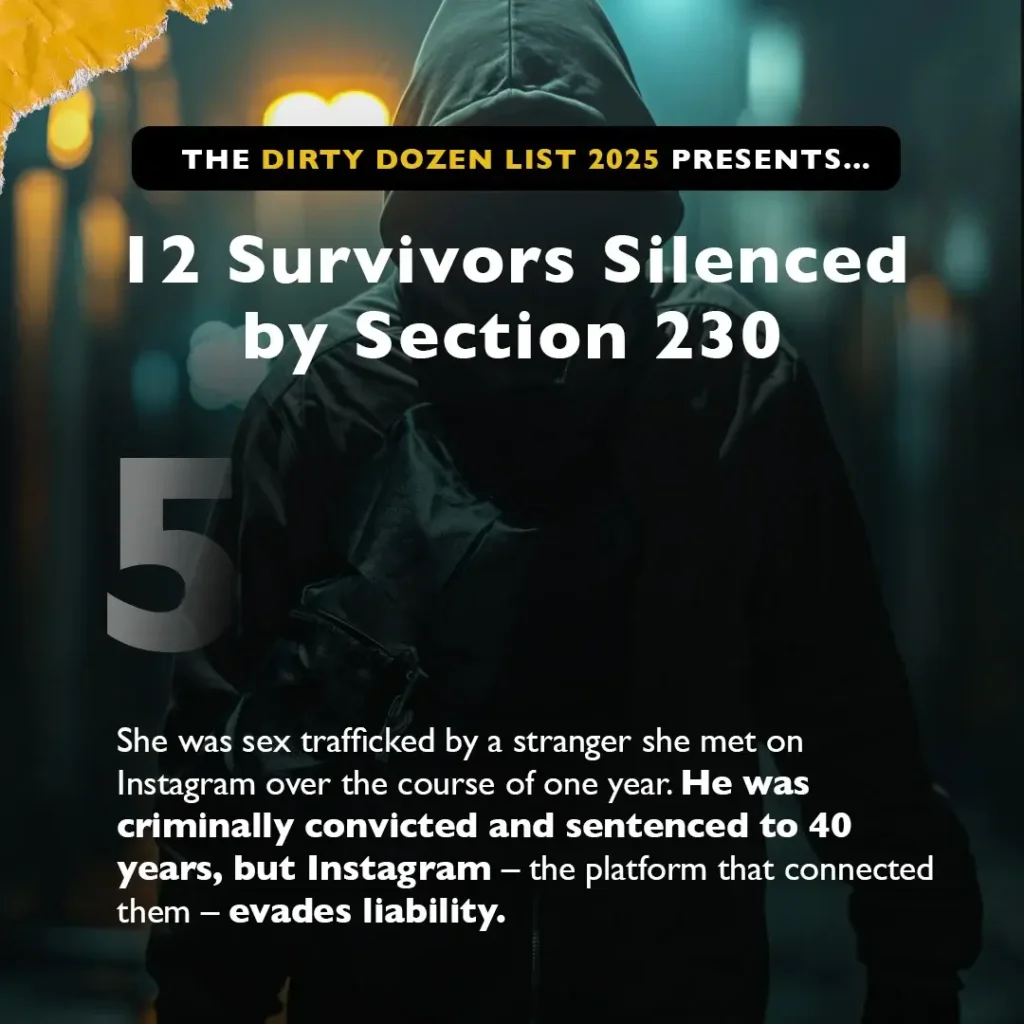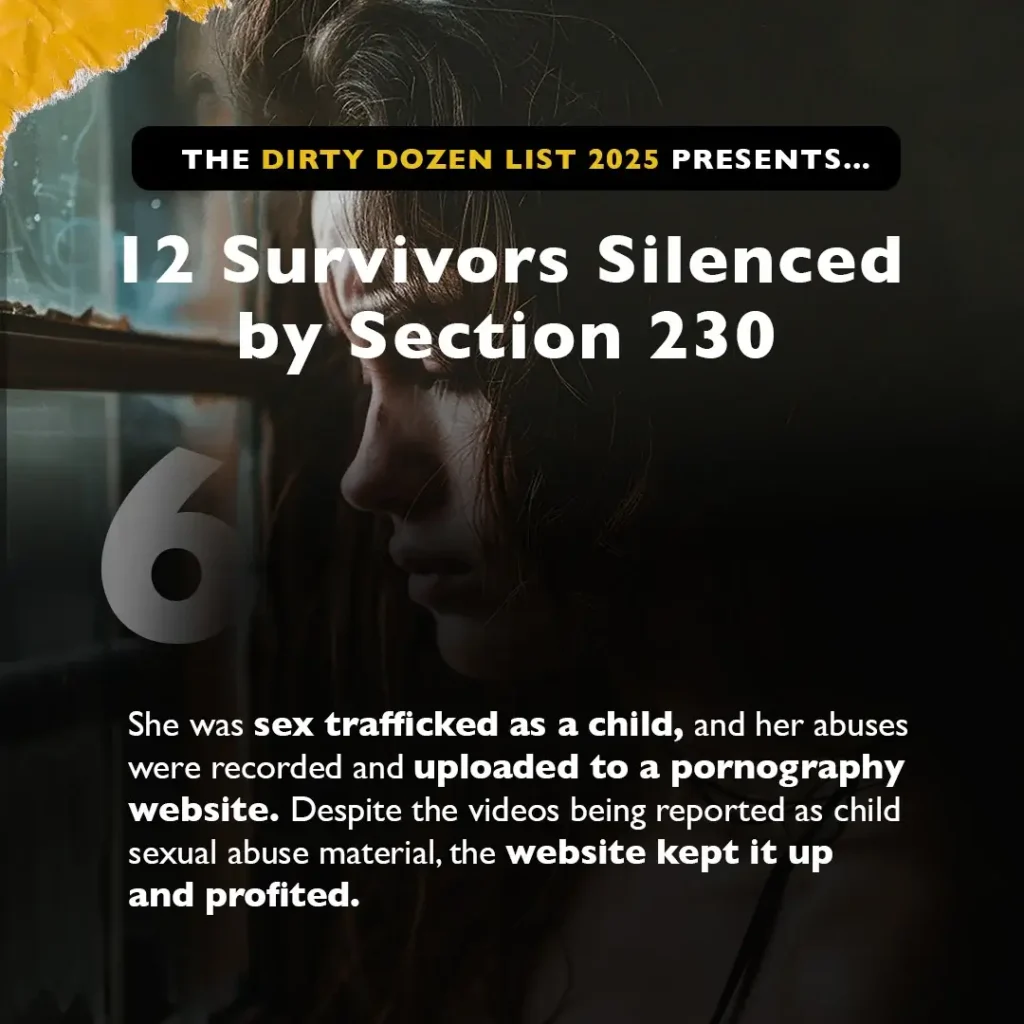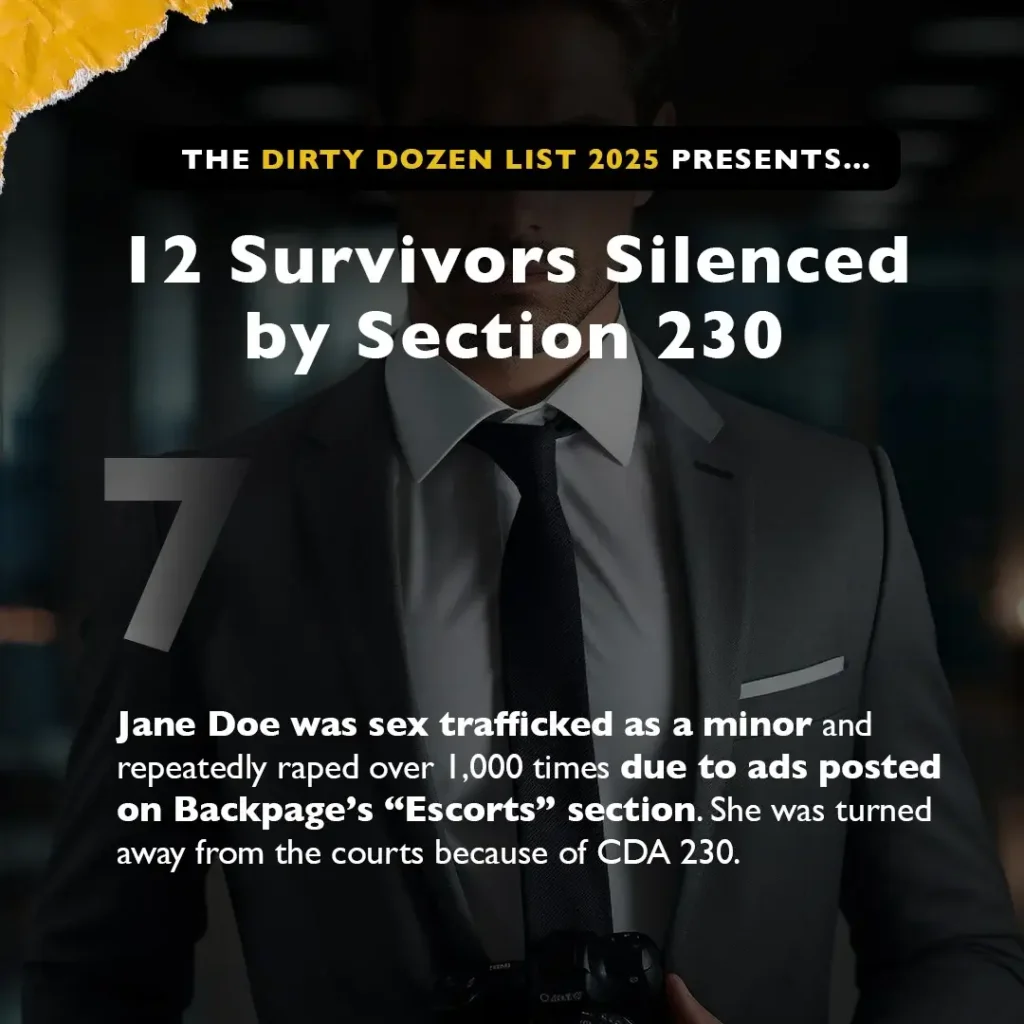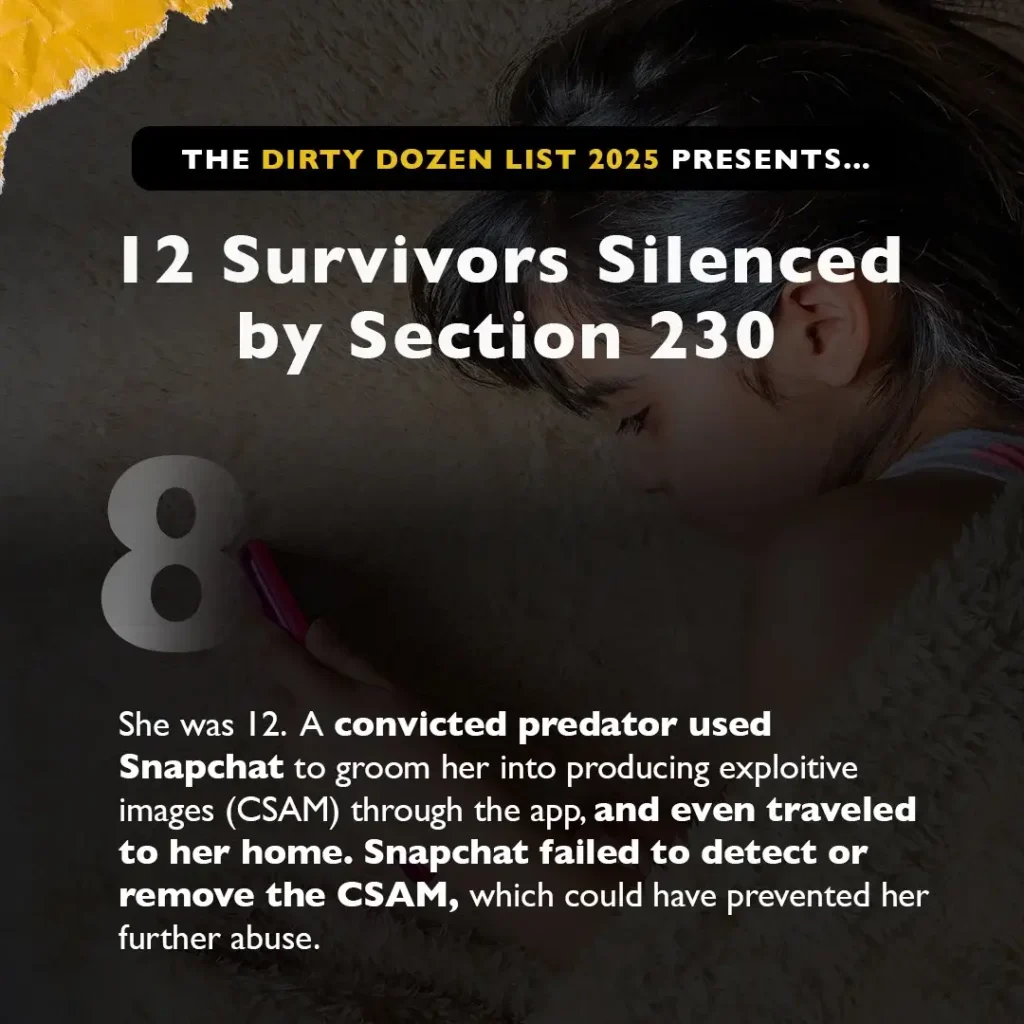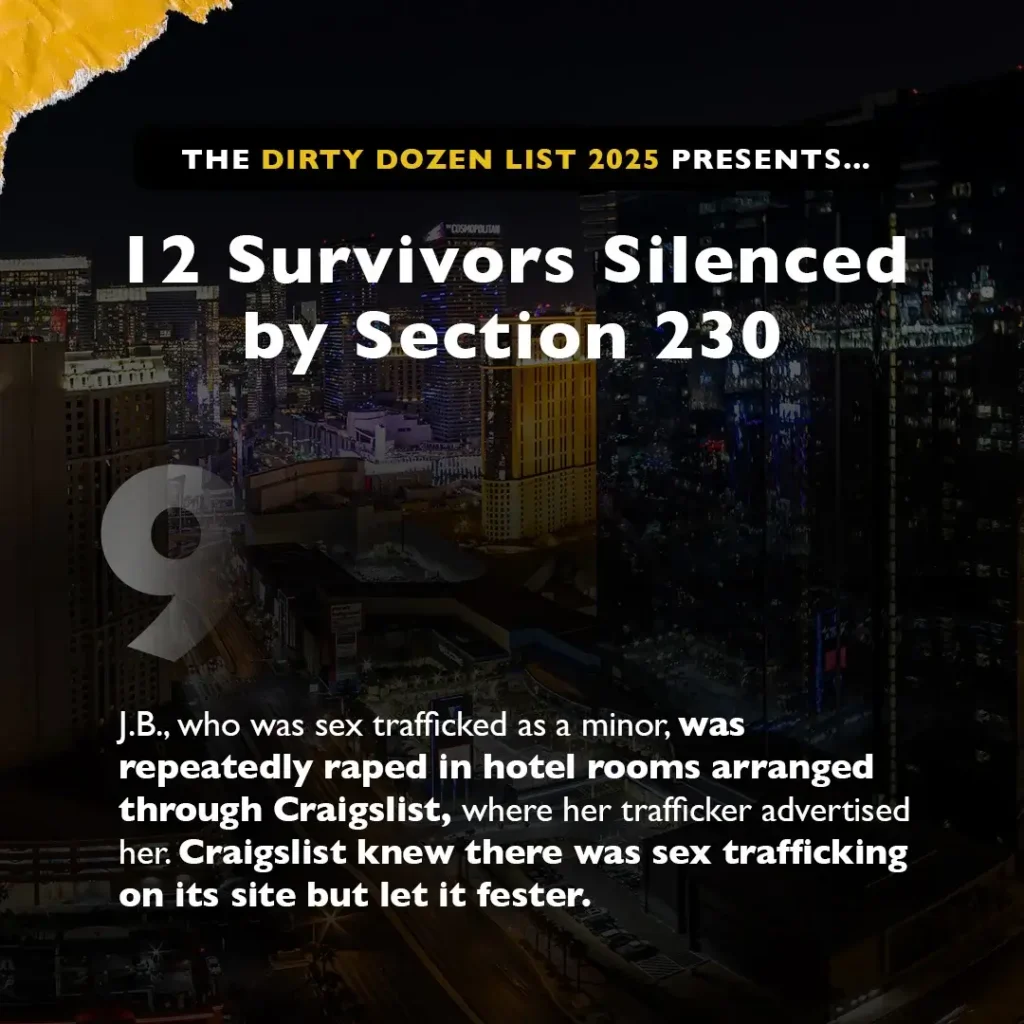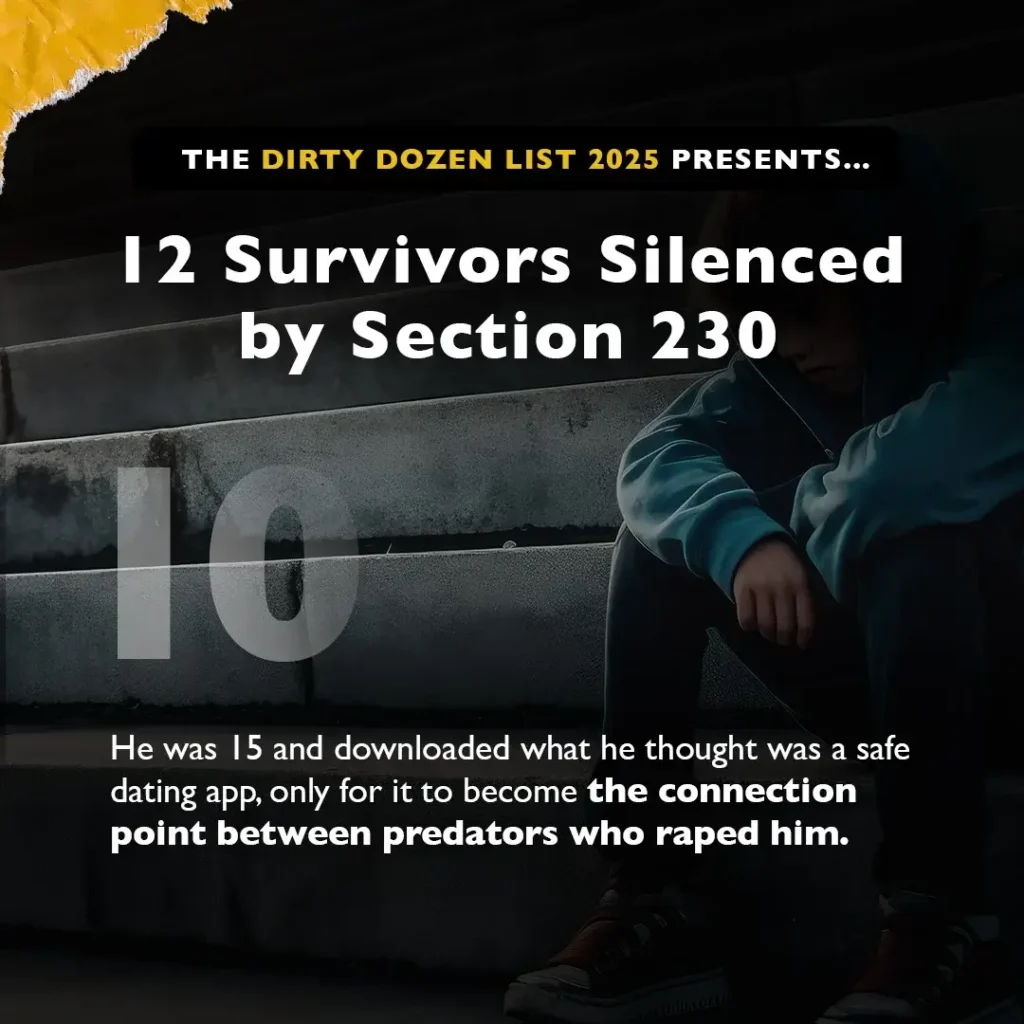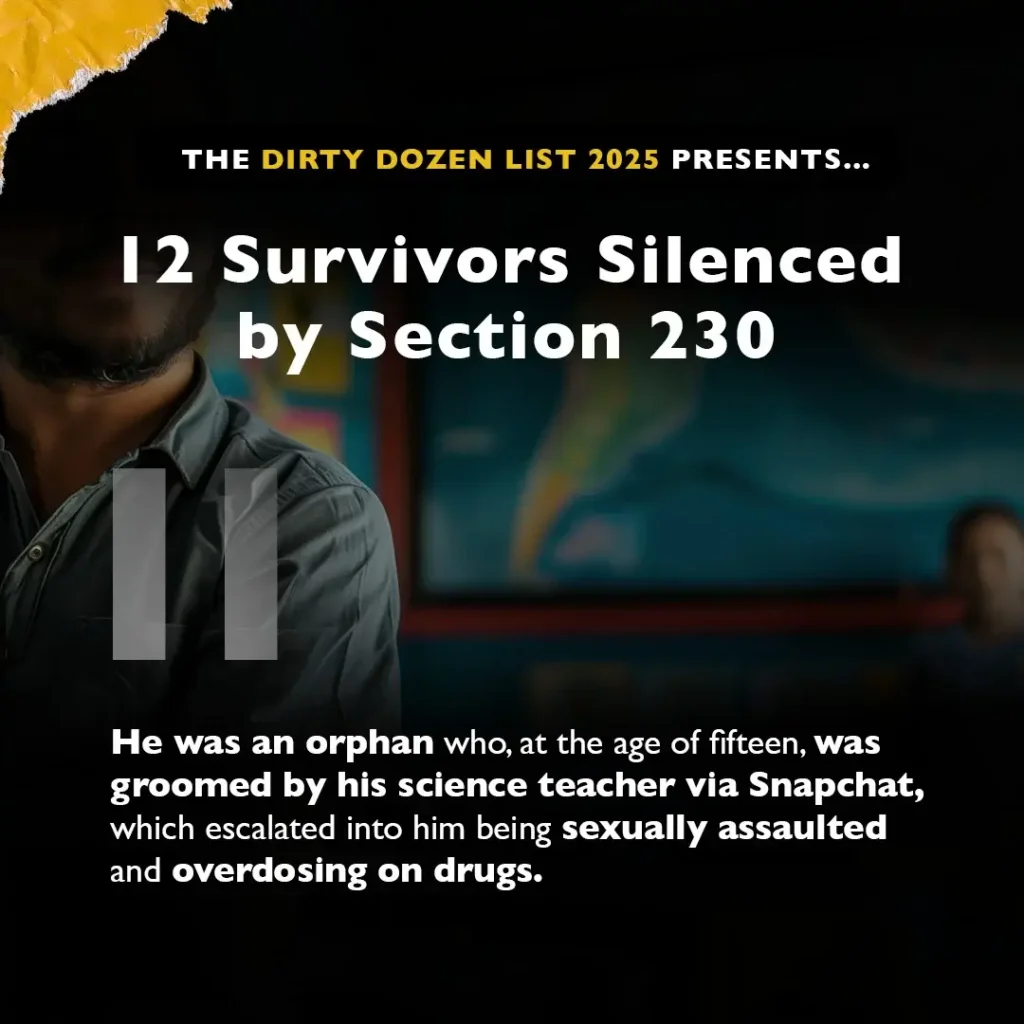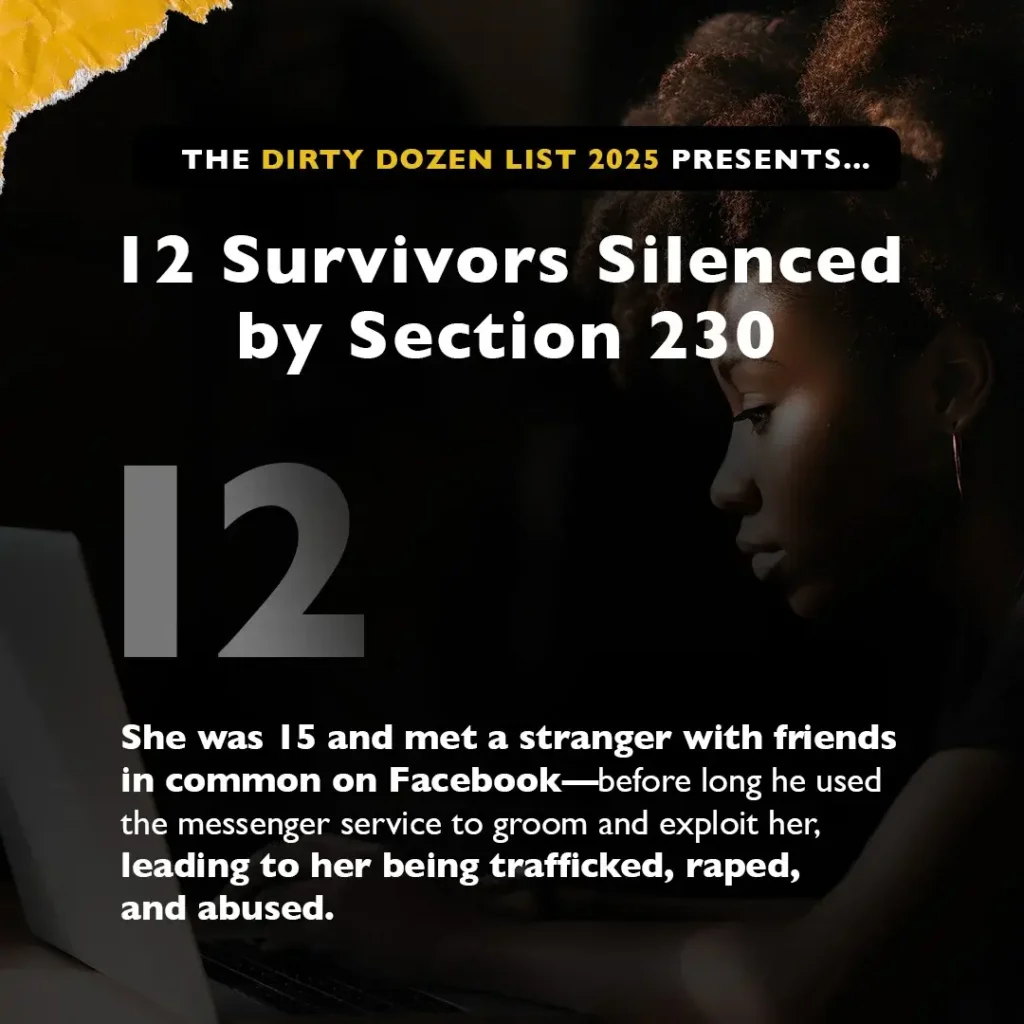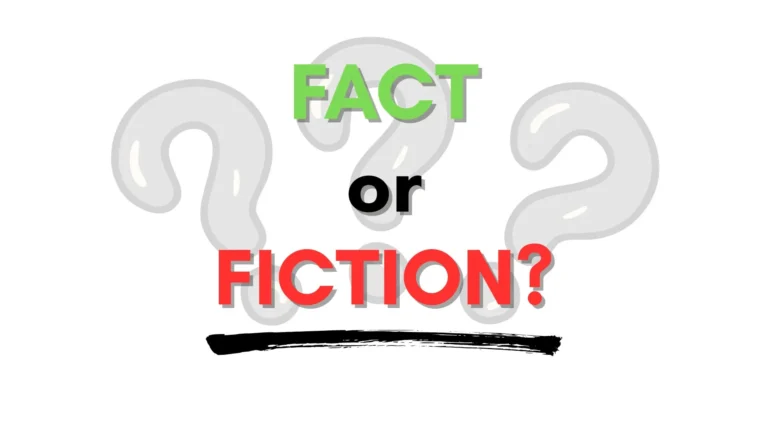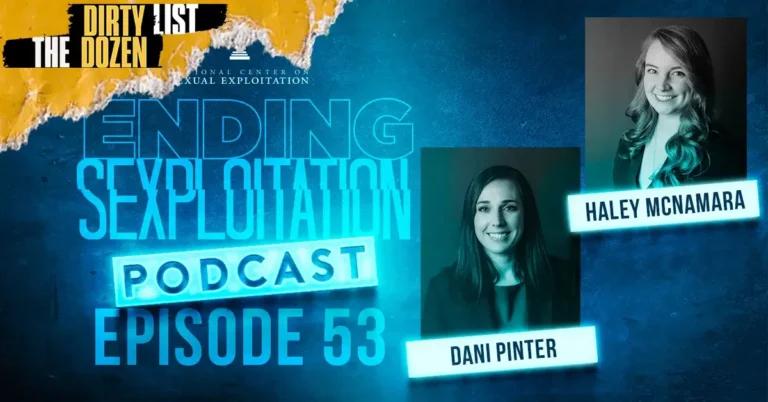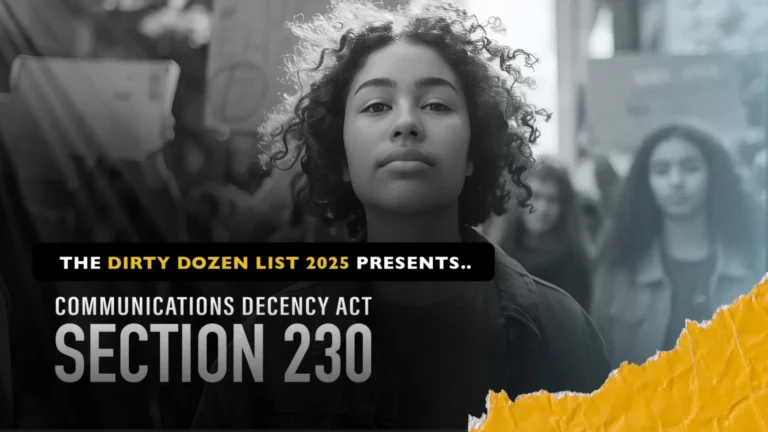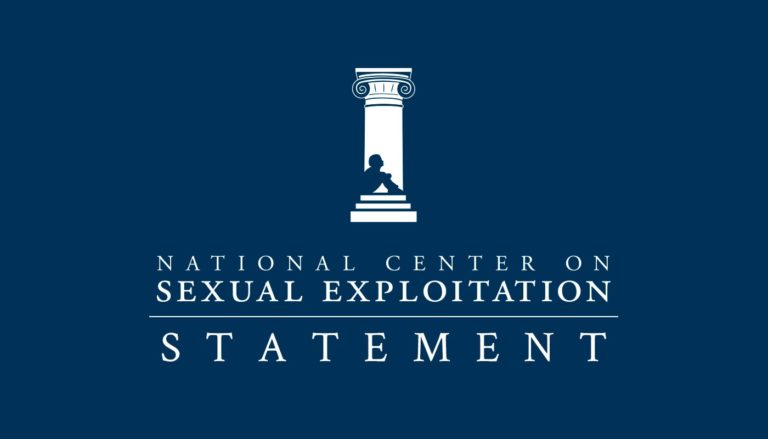
The Dirty Dozen List Presents


*None of the images on this page depict actual survivors
The Dirty Dozen List is an annual campaign that historically called out twelve mainstream entities for facilitating, enabling, and even profiting from sexual abuse and exploitation. Since its inception in 2013, the Dirty Dozen List has galvanized thousands of individuals like YOU to call on corporations, government agencies, and organizations to change problematic policies and practices. This campaign has yielded major victories at Google, Netflix, TikTok, Hilton Worldwide, Verizon, Walmart, US Department of Defense, and many more.
However, despite years of advocacy and victories, sexual abuse and exploitation is increasingly rampant online. Progress is slow and piecemeal, as Big Tech lacks a foundational incentive to prioritize online safety.
It is time to stop accepting incremental change.
That is why the 2025 Dirty Dozen List presents a call to repeal Section 230 of the Communications Decency Act.
What is

The very foundation of our online society, the Communications Decency Act Section 230, was laid in the early days of the Internet back in 1996, but its cracks have now become chasms. What once seemed a necessary legislative underpinning for online business to thrive now stands as the greatest opus to shield technology companies from any and all accountability—especially when it comes to the proliferation of sexual exploitation. Misinterpretations of Communications Decency Act Section 230 grant Big Tech blanket immunity for any and all types of sexual abuse and exploitation they facilitate. Until we amend CDA 230, corporations can’t be held accountable!
Enacted in 1996, Section 230 predates social media, modern smartphones, and the modern internet; it governed just 20 million American users, not today’s 300 million.
Established before the advent of Google (1998) and YouTube (2005), Section 230 has not been meaningfully changed, outdated for today’s digital giants hosting billions of content pieces.
Drafted long before the rise of modern social media, this law was already in place eight years before Facebook launched in 2004, eventually connecting billions globally.
By 2012, with Snapchat’s new ephemeral messaging, Section 230 had been static for 16 years amidst vast technological changes.
Despite the rise of deepfake technology and widespread application of AI, the law continues to allow blanket immunity from liability in an era of exponential internet growth.
Enacted in 1996, Section 230 predates social media, smartphones, and the modern internet; it governed just 20 million American users, not today’s 300 million.
Established before the advent of Google (1998) and YouTube (2005), Section 230 remains unchanged, outdated for today’s digital giants hosting billions of content pieces.
Untouched since its inception, it was already in place eight years by the time Facebook launched in 2004, connecting billions globally.
By 2012, with Snapchat’s new ephemeral messaging, Section 230 had been static for 16 years amidst vast technological changes.
Despite the rise of deepfake technology and widespread application of AI, the law remains unchanged in an era of exponential internet growth.


Take Action Now
Call on legislators to repeal Section 230 of the Communications Decency Act
The Dirty Dozen List Stories
This year, instead of highlighting 12 companies that facilitate sexual exploitation, we are highlighting 12 survivors who were denied justice in the courts because of Section 230 of the Communications Decency Act.
These survivors were silenced, and the companies that enabled their abuse were given immunity.
Communications Decency Act
SECTION 230
Misinterpretations of Communications Decency Act (CDA) Section 230 have granted Big Tech blanket immunity for facilitating rampant sexual abuse and exploitation. Until we repeal Section 230, corporations have NO INCENTIVE to make their products safer.
Share The Dirty Dozen List
Spread the word to end Section 230
Download powerful graphics to share on social media and help spread the word to repeal Section 230 of the Communications Decency Act.


“We've reviewed the content, and didn't find a violation of our policies, so no action will be taken at this time.”
